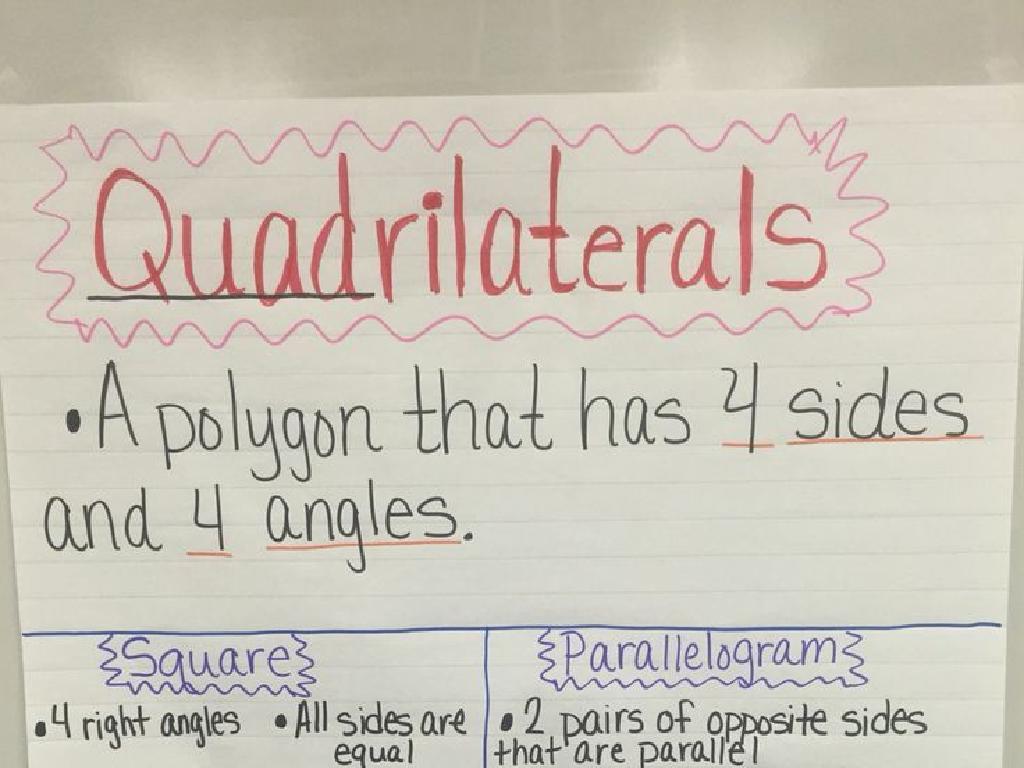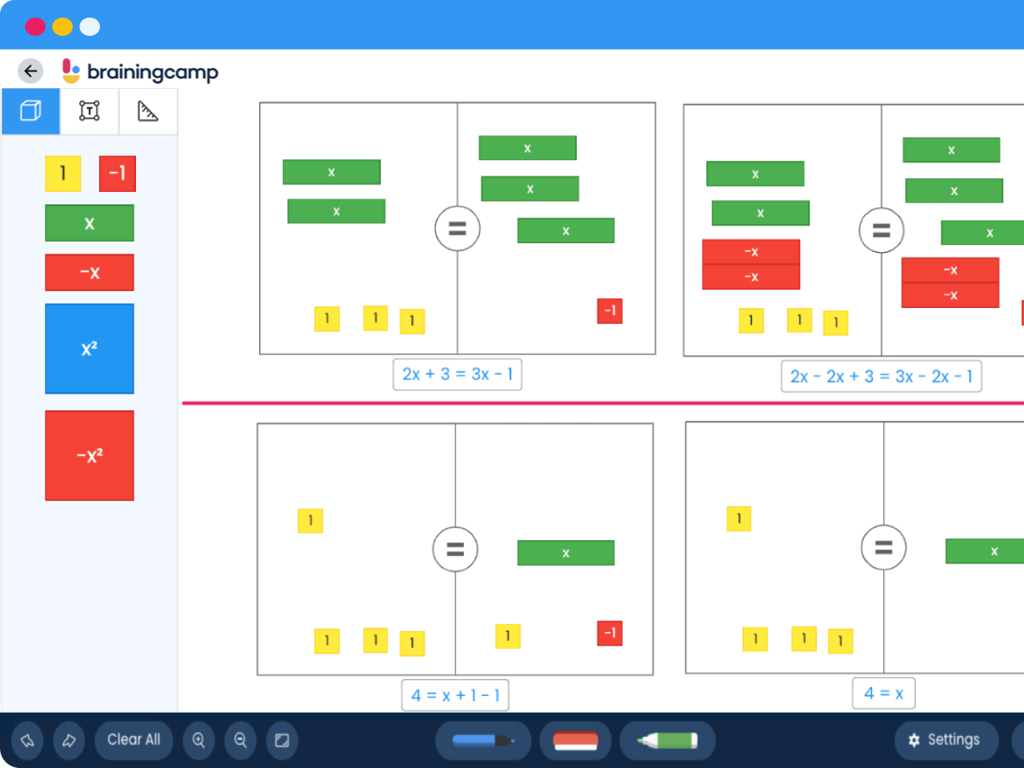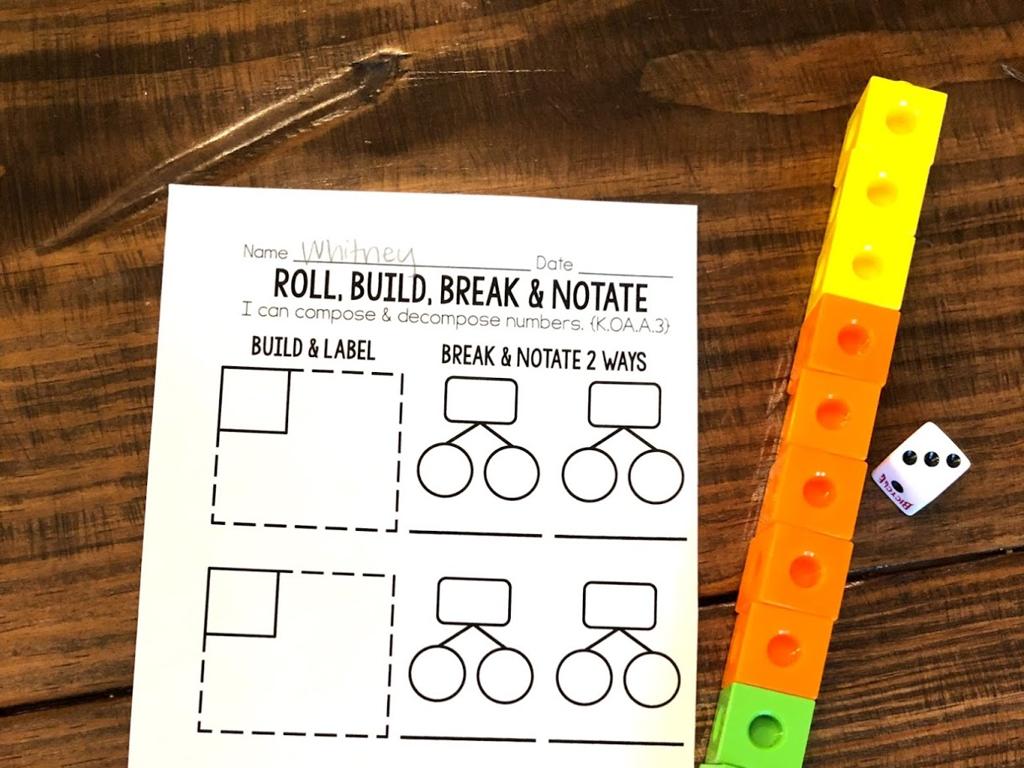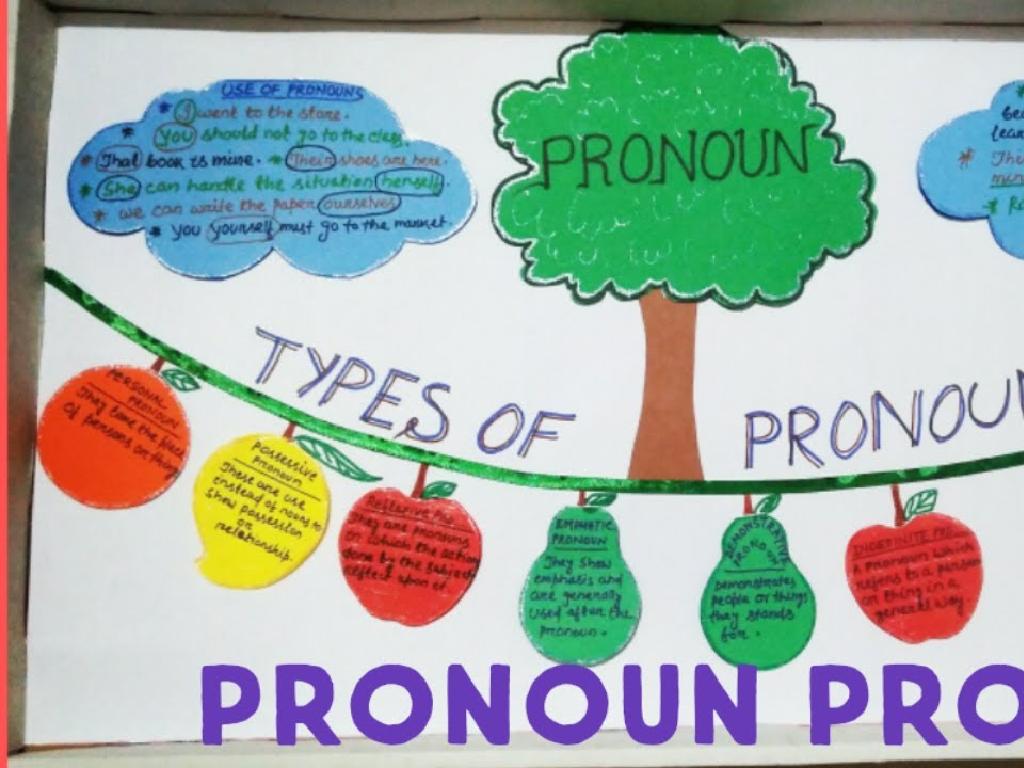Read A Topographic Map
Subject: Science
Grade: Fourth grade
Topic: Earth'S Features
Please LOG IN to download the presentation. Access is available to registered users only.
View More Content
Welcome to Topographic Maps!
– What’s a topographic map?
– It’s a map that shows elevation using lines
– Maps show Earth’s surface
– See hills, valleys, and plains on a map
– Reading topographic maps
– Learn to find high and low places
– Today’s map adventure
|
This slide introduces students to the concept of topographic maps, which are tools that geographers and hikers use to understand the features of Earth’s surface. These maps use lines to represent different elevations, allowing us to visualize the terrain of an area, such as hills, valleys, and plains. During today’s lesson, students will learn how to interpret these lines to identify high and low points on a map, which is an essential skill for understanding geographical features and landforms. Engage the students with examples of topographic maps and encourage them to ask questions about the different symbols and lines they see.
Understanding Maps
– A map is a place’s picture
– Maps display various features
– They can show cities, roads, and landforms
– Each map has a unique purpose
– Some are for navigation, others for planning
– Topographic maps show land shapes
– They illustrate elevation and terrain
|
This slide introduces the concept of maps to fourth-grade students, emphasizing that maps are more than just pictures; they are tools for understanding the world around us. Explain that maps come in different types, each designed for specific uses, such as navigating through cities or understanding the geography of an area. Highlight that topographic maps are special because they show the shape of the land, including mountains, valleys, and plains, using lines and symbols. Encourage students to think about why different maps are useful for different purposes and how topographic maps can help us visualize the Earth’s features.
Introduction to Topography
– Topography: Earth’s surface shape
– Shows hills, valleys, plains, mountains
– Includes various landforms
– Like where we live, play, or explore
– Topography’s real-life importance
– Used in planning buildings, roads, and for hiking
– Exploring maps in daily life
|
This slide introduces students to the concept of topography, which is the study of the shape and features of the Earth’s surface. Explain that topography includes natural formations such as hills, valleys, plains, and mountains. Discuss why understanding topography is crucial, such as in urban planning, construction, and outdoor activities like hiking. Emphasize how topographic maps help us navigate and understand the geography around us. Encourage students to think of times they have encountered different landforms in their lives, and how those might be represented on a map.
Understanding Topographic Maps
– Topographic maps show elevation
– They use lines to illustrate height differences
– Contour lines represent shape
– These lines are known as contour lines
– Close lines indicate steepness
– When lines are close, the ground is steep
– Reading maps helps visualize terrain
|
This slide introduces students to the basics of topographic maps, which are a type of map characterized by their use of contour lines to represent the three-dimensional features of the landscape on a two-dimensional surface. Each contour line on a topographic map represents a specific elevation point and the shape of the land. When contour lines are close together, it indicates a steep slope, while lines that are spaced further apart suggest a gentler slope. This concept is crucial for students to understand as it helps them to visualize and interpret the physical landscape. During the lesson, use real-life examples of topographic maps and encourage students to discuss what they notice about the spacing of the lines and what that might mean for the shape of the land.
Reading Contour Lines on Topographic Maps
– Each line stands for an elevation level
– Imagine contour lines as ‘steps’ up a hill
– Contour intervals show elevation change
– The space between lines indicates how steep the hill is
– Practice reading contour lines
– We’ll look at maps and identify the ‘steps’
|
This slide introduces students to the concept of contour lines on topographic maps, which are essential for understanding the map’s representation of elevation. Each contour line on a topographic map represents a specific elevation above sea level, and the contour interval indicates the difference in elevation between adjacent lines. When the lines are close together, the terrain is steep; when they’re spread apart, it’s more gradual. During the class, engage students with hands-on practice by examining sample maps and identifying the contour lines and intervals. This will help them visualize the ‘shape’ of the land and understand how to read the map’s three-dimensional features in a two-dimensional format.
Symbols and Colors on Topographic Maps
– Map symbols represent features
– Symbols for rivers, trails, campsites
– Colors indicate various terrains
– Blue for water, green for forests
– Legends explain map symbols
– A legend is a map’s key to symbols
– Practice reading map legends
|
This slide introduces students to the basics of interpreting topographic maps, focusing on symbols and colors. Topographic maps use standardized symbols to represent physical features such as rivers, trails, and campsites, which allows for a clear understanding of the geography. Colors are used to differentiate between various types of terrain; for example, blue often represents water bodies, while green may indicate forested areas. The legend of a map is an essential tool for reading and understanding these symbols and colors. As an activity, students can practice by using a simple legend to identify features on a sample map, reinforcing their learning and building map-reading skills.
Let’s Practice Reading a Topographic Map!
– Identify highest & lowest points
– Find and describe a steep hill
– Steep hills are shown by close lines
– Locate a body of water
– Water is indicated by blue or contours
– Explain your findings
|
This slide is an interactive activity designed to help students apply their knowledge of topographic maps. Students will practice identifying various features on a map by looking for the highest and lowest points, which are indicated by the contour lines that are closest together at the top and spread out at the bottom. They will also look for steep hills, which can be recognized by the closeness of the contour lines; the closer the lines, the steeper the hill. Lastly, they will locate bodies of water, which are often shown in blue or as contour lines that form a ‘V’ shape pointing upstream. Encourage students to explain how they found each feature to reinforce their understanding of reading topographic maps. Possible activities include working in pairs to find features, drawing their own simple topographic map, or using a 3D model to visualize how contour lines represent elevation.
Topographic Map Challenge
– Pair up for map puzzle
– Navigate using contour lines
– Contour lines show elevation
– Reach from start to finish
– Share your adventure
– Discuss the journey and findings
|
This activity is designed to help students understand how to read and interpret topographic maps. By working in pairs, students will engage in a hands-on puzzle that requires them to use contour lines to navigate a specified route from start to finish. This will not only teach them about the concept of elevation and how it is represented on maps but also encourage teamwork and problem-solving. After completing the challenge, students will be asked to share their experience and what they learned about reading topographic maps with the class. This sharing will reinforce their understanding and allow for a discussion on the practical applications of topographic maps. Provide guidance on how to read contour lines and ensure each pair has a map and a clear starting and ending point for their journey.
Class Activity: Crafting Topographic Maps
– Create a landscape with clay
– Mold hills, valleys, and other features
– Draw contour lines for elevation
– Use string or markers to represent changes in height
– Present and explain your map
– Share your creation and describe how elevation changes
|
This hands-on activity is designed to help students understand the concept of topographic maps by creating a physical model. Provide students with clay to form landscapes, including features like hills and valleys. Once the model is complete, students will draw contour lines to indicate elevation changes. These lines should be evenly spaced and follow the form of the landscape. After completing their models, students will present their topographic maps to the class, explaining the significance of the contour lines and the elevation changes they represent. For the teacher: Prepare enough clay for the class, and have strings or markers available for drawing contour lines. Consider grouping students for collaborative learning. Possible variations of the activity could include using different materials for landscapes or having students create maps of real or imaginary places.
Reflecting on Topographic Maps
– Topographic maps show elevation
– They help us understand landforms
– Useful for various real-life applications
– Hikers use them to find trails, builders to plan structures
– Share an interesting map feature
– Maybe the contour lines or how mountains look flat
|
As we wrap up today’s lesson, let’s reflect on our learning about topographic maps. These maps are a tool for visualizing the elevation and terrain of Earth’s surface through contour lines. Understanding how to read these maps is crucial for many real-world tasks, such as planning a hiking trip or constructing a new building. Encourage students to think about how this knowledge can be applied outside the classroom and to share one aspect of topographic maps they found particularly intriguing. This reflection helps solidify their understanding and appreciation of the topic.





